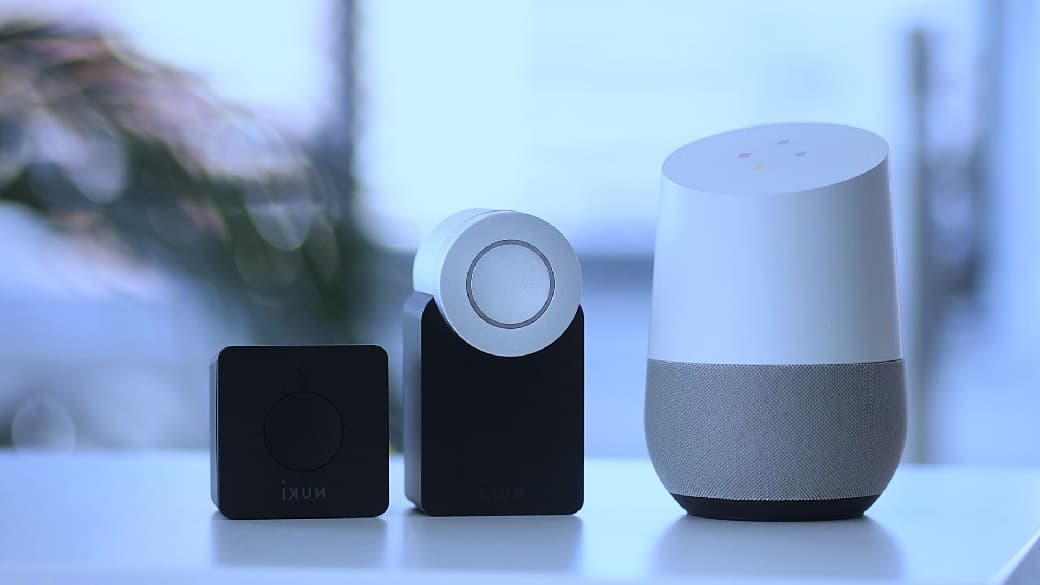
Soundbar and Smartspeaker – 3D Audio for Home Entertainment
Content
You can see from the increasing number of 3D audio-capable products available that immersive sound is gradually gaining the appreciation it deserves. Besides headphones and matching apps, more and more soundbars and even smart speakers are equipped with 3D audio features.
Enjoy Dolby Atmos on the couch? What movie theaters started promoting not so long ago is now already a reality in the living room. Well, let’s leave the church in the village – and the speakers in the movie palace. Of course, a soundbar alone can’t compete with an entire cinema system. Nevertheless, amazingly immersive listening experiences can be achieved with these devices. Find out everything you need to know about this topic here.
Update 23/01
- Sony SRS-RA5000 added with Multiroom support (7 driver units for room-filling sound, 360 Reality Audio, Hi-Res Audio, Wi-Fi)
- Sony HT-A9 added with 360 Spatial Sound Mapping Dolby Atmos®/DTS:X® home entertainment system | HT-A9
- Syng Cell Alpha added as top 100 of best invention of 2021
- the new Apple Homepod of the second generation with interesting advertising around 3D audio. Few words around Dolby Atmos
Soundbar or Smartspeaker, what’s the difference?
Due to their – in biology, we would say allied – this article is dedicated to Soundbars and Smartspeakers. The compactly built playback systems are currently enjoying great popularity and test reports are increasingly in demand. Acceptable to very good sound is offered in a comparatively space-saving and sometimes inexpensive system. Possibly one of the recipes for the success of these products.
A common feature that is especially relevant in the context of VRTonung is the support of 3D audio formats, which some of these speakers now offer.
But where are the differences? Roughly speaking, in the field of application. Of course, all of them can be used to play music, etc.
Smartspeakers in their natural environment
But as the name Smartspeaker suggests, these devices have a “smart” component. Usually, a voice user interface such as Alexa, Siri or Google Assistant. So, there are various manufacturers that have packed their already existing assistant into a Homepod, Echo* or Nest.
The possibility of combining several of these devices probably also falls into this smart term. So you could call Smartspeakers smart everyday speakers. Everyday speakers because they are usually handy speakers that do not aim for high-fidelity sound. They are more likely to be used for listening to music on the side, for example. Smartspeakers can be found in living areas, bathrooms, and bedrooms. If you want, all at the same time, from all directions.
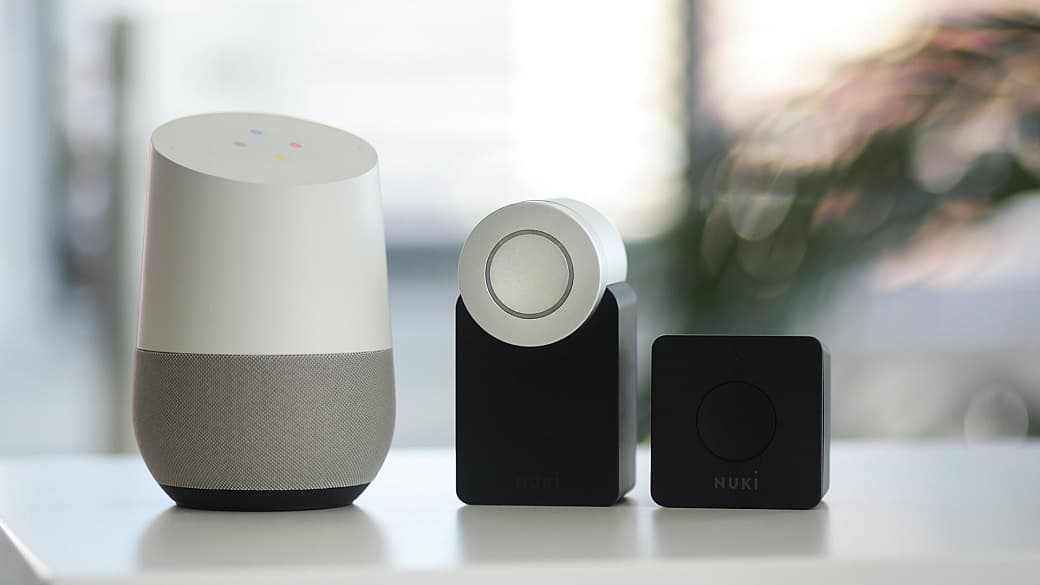
A Soundbar feels at home especially here
Soundbars, on the other hand, are used by many people in combination with TVs and can usually only be found right there under the screen. The reason is that you can expect a higher sound quality here than with the TV’s built-in speaker. In addition, there is now a wide range of surround sound playback and even Dolby Atmos Soundbars. This of course drastically improves the viewing experience, but more on that later.
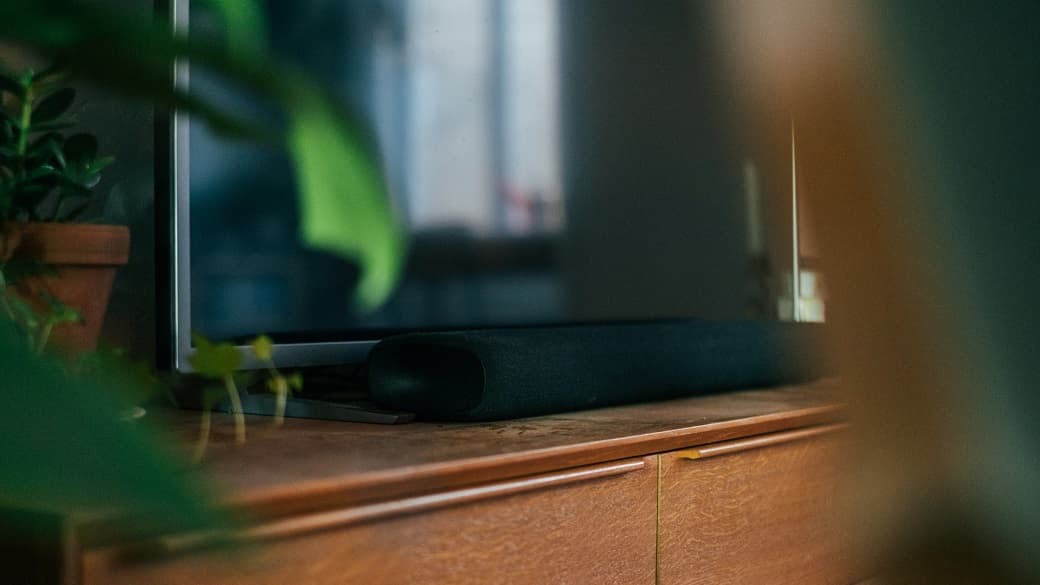
The practical concepts of immersive sound reproduction.
The central question for most people at this point will probably be, how can immersive sound be produced by such a single device at all? After all, you seem to have only one speaker in one position. But in fact, these audio devices have almost magical abilities that distribute three-dimensional sound throughout the room.
In the past, you needed at least five speakers with a subwoofer to create a 5.1 surround sound image. This is quite impractical for cabling and placement in the room. Probably one of the reasons why this variant could not establish itself. But with innovative audio research, two technical novelties were created.
There are two concepts that are briefly explained below.
Beamforming – the acoustic spotlight
Beamforming refers to the emission of bundled sound sources that are beamed onto reflective surfaces. This creates acoustic mirror sources that are not perceived by the actual sound source. It is a bit like shining a spotlight not directly on its object, but indirectly on the wall, thus diffusely distributing the light in the room.
Focusing is achieved by creating constructive and destructive superpositions of sound waves. When sound is emitted, constructive interference occurs in the desired direction, while the sound waves are destructively superimposed at the remaining points. Simply put, the waveforms are adjusted so that sound is produced exactly where you want it. In this case, around the listener, while the rest of the room gets as little sound as possible, where it is not needed anyway.
With discrete, i.e. individually working loudspeakers, several channels can be radiated in different directions. This creates the possibility of reproducing surround mixes and 3D audio beyond stereo. Thus, not only one loudspeaker is installed in the devices, but several. These are directed to the left, right, to the side, and upwards.
Most 3D audio-capable soundbars and smart speakers use this technology. Since you work with mirror sources, i.e. (wall) reflections, the room plays an important role. In an anechoic room, this technology would not work at all. But as already mentioned, these products are mostly used in living rooms. There, the reverberation of the room sound is quite natural and intentional.
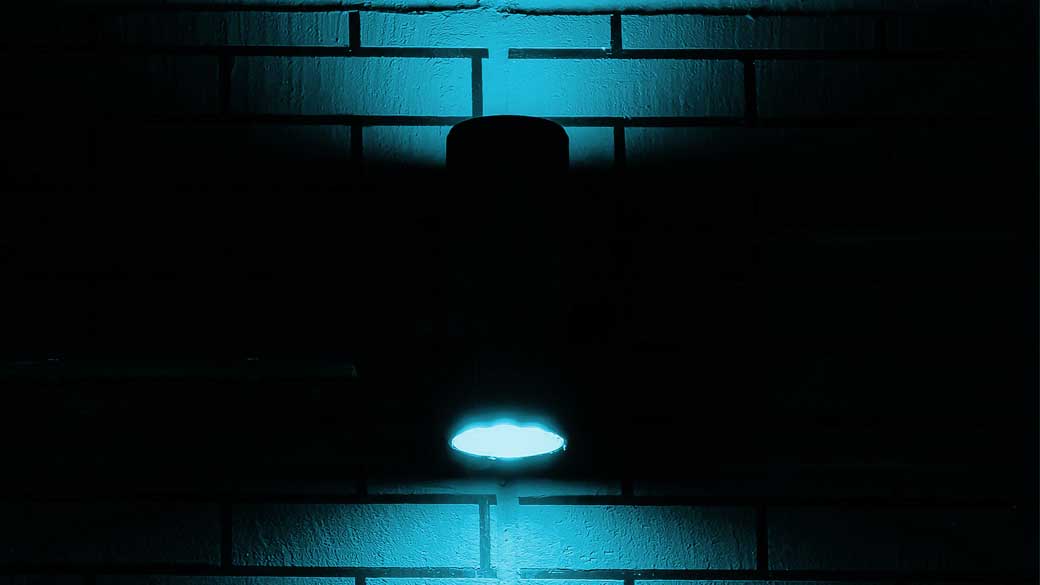
Crosstalk Cancellation – Clean separation of left and right
The term binaural audio is mainly used in combination with headphones. Although only two audio channels are used, a three-dimensional impression is created. Clever algorithms calculate: How would the sound have to sound for our left and right ear so that the sound is not only perceived from the front?
This principle can also be used for loudspeakers. With the right mathematics in the background, a loudspeaker can sound as if it were standing behind you. Even if it is in front of you. Crazy, isn’t it?
This means that audio signals are played which are encoded with an HRTF (Head Related Transfer Function). Since the HRTF contains all directional information, this assumes that the right channel is only heard by the right ear and the same for the left – just like when playing binaural audio over headphones.
Naturally, crosstalk occurs with loudspeakers, i.e. normally both ears hear the signal of both channels somewhere. To counteract this effect, crosstalk cancellation is used. A signal in phase opposition to the crosstalk signal is played so that it is canceled. This means that the signal from the left audio channel arrives at the left ear, minus the signal that only the right ear is allowed to hear.
Compared to beamforming technology, crosstalk cancellation is rarely used in commercial products. The problem here is that the sweet spot is quite small and you really have to sit in the sweet spot for the whole thing to work. However, the company Noveto with its Soundbeamer gives an idea of what could come. You can imagine the technology as an acoustic laser beam that sends sound directly into our ears.

Stereo Upmix
The vast majority of audio signals from music and movies are in two-channel stereo. But what if the Smartspeaker has more than two drivers, as described above? This is where the upmixer comes into play, inventing more audio information than there actually is.
Some Soundbars and also Smartspeakers like the Amazon Echo* Studio have such an algorithm built-in. In the case of Soundbars and Smartspeakers, stereo signals are converted in such a way that they have an increased immersive effect via their directional speakers.
The upmix feature of these playback systems has the advantage of not being dependent on object-based audio formats, as is common with beamforming. The normal stereo format is sufficient here, which is the majority of the audio content. On the other hand, with upmix technology, you can’t convey such differentiated directional impressions. As you can see, each technology has its advantages and disadvantages.
Audio formats – what sounds beyond stereo
As alluded to earlier, most 3D audio-capable Soundbars and Smartspeakers use object-based audio formats for an immersive listening experience. Object-based formats are channel-independent, meaning no specific speaker count or position is required for accurate playback.
Rendering takes place in the playback device. This requires a decoder in the device that converts the metadata of the object-based audio format to play it back accordingly. With object-based formats, one is much more independent concerning the type and form of the playback system. This means that the manufacturers do not always have to install exactly 6 loudspeakers, as is the case with 5.1. Instead, they are free in product development, Next Generation Audio (NGA) then takes care of the optimal playback.
Most soundbars and smart speakers support Dolby Atmos, the top dog of object-based audio formats. However, many devices also support other formats like MPEG-H or DTS:X. Often, Dolby Atmos plus a second 3D audio format is supported.
In the case of the stereo upmix function, which some of the devices additionally offer, only normal stereo files are needed and can thus be used with Spotify or Youtube without problems. If you know how, however, you can create an amazingly three-dimensional sound image even with a stereo file. Which brings me to the next important point:
Content – what’s already available and what’s still to come?
What content is actually available for playback via fine 3D audio-capable soundbars and smart speakers? Basically, we can distinguish between music streaming and video streaming.
Music streaming
Music streaming platforms that offer 3D content predominantly rely on Dolby Atmos or MPEG-H in the form of Sony 360 Reality Audio. Namely, these are:
- Amazon Echo*
- Deezer
- Tidal
- nugs.net
Devices that support the corresponding format should therefore be able to offer immersive music enjoyment via the aforementioned platforms. It should be mentioned that the selection of songs mixed in 3D formats is not yet very large. You can currently count on about 1000 songs per platform, but the tendency is increasing.
It should also be mentioned that for most music streaming providers you need a paid premium subscription to be able to use the 3D audio content. Here you can find out everything about 3D audio music streaming.
Television and Video on Demand
When it comes to 3D audio, there’s really no way around Dolby Atmos in the movie and video streaming sector. Providers that support content in this format include
- Netflix
- Amazon Prime Video*
- Disney Plus
- Maxdome
- Apple TV+
- Rakuten TV (only on selected devices)
In summary, although there are already several providers in both the music and video sectors, the abundance of 3D audio content is still manageable. In this case, it is not access that is lacking, but the content itself. Therefore, content creators like me are now asked to create the right balance here again 😉
What products are there anyway?
Since this article is supposed to provide a good overview, a few product names have to be mentioned. Instead of dropping a detailed review and test winner, I would just like to briefly introduce a few representatives for 3D audio capable Soundbars and Smartspeakers:
Amazon Echo Studio Smartspeaker
The Echo Studio is THE representative for 3D audio capable Smartspeakers. Because up to now, there are only a few devices in the Smartspeaker sector that can play 3D audio compared to Soundbars. The Echo Studio also plays a pioneering role here.
The Smartspeaker has five built-in speakers, four of which are directional. It, therefore, works with beamforming. Dolby Atmos and MPEG-H are supported, and an upmix function is also offered. If the content is right, a surprisingly enveloping sound can be created via the upmix technology. Like the Ambeo Soundbar, the smart speaker automatically adjusts to the room conditions.
At the moment, the 3D Audio Playlist from Amazon Music can only be played on the Amazon Echo*. That is quite an announcement in terms of immersive music.
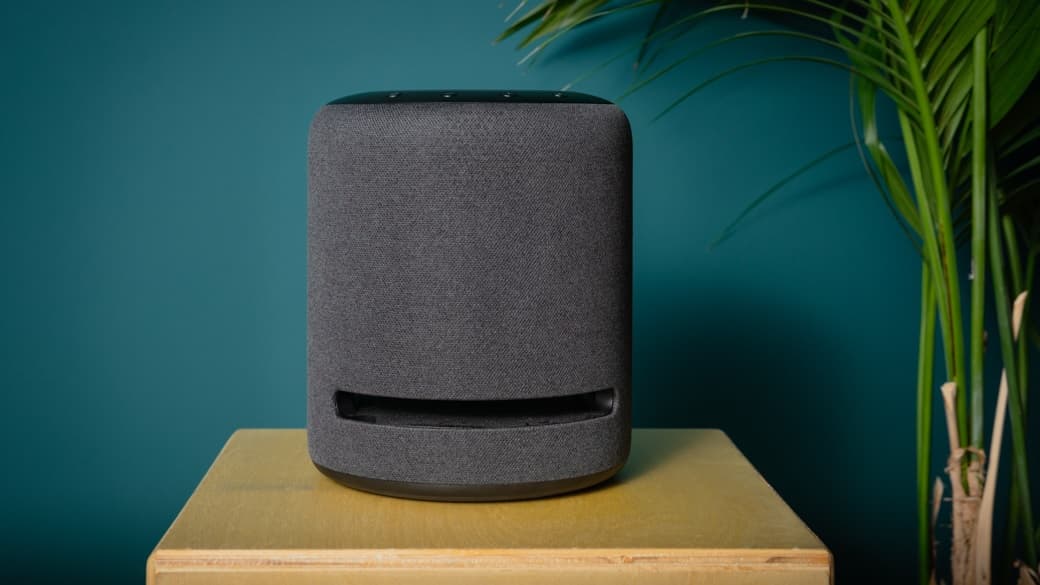
Sony SRS-RA5000
is equipped with multiroom support (7 driver units for room-filling sound, 360 Reality Audio, Hi-Res Audio, Wi-Fi). Winning a reddot design award in 2021 it is a premium smart speaker for 3D audio. Three upward-facing speakers distribute the music vertically, three side speakers horizontally. The woofer additionally fills the room with deep bass.
Because 360 Reality Audio tracks store three-dimensional location data, they deliver the in room-filling sound. If your favorite tracks aren’t available in this format, you can still immerse yourself in room-filling stereo sound through Sony’s Immersive Audio Enhancement algorithm.
No matter where you use the RA5000: It can be optimally calibrated using an internal microphone and Sony’s unique algorithm. Simply press and hold the Immersive Audio Enhancement button to calibrate. It is also compatible with High-Resolution audio, in CD quality.
Sony HT-A9
I wouldn’t call it a smart speaker in terms of how you consumer content with it. But the idea is kind of neat. Multiple instances of this speaker use something called 360 Spatial Sound Mapping. By using multiple smart speakers you can play back Dolby Atmos®/DTS:X® as a home entertainment system.
Adapting to your living room, it creates up to twelve phantom speakers from just four real speakers. The listening area is not limited to the front of the TV, but covers a much larger area. You don’t have to rearrange your furniture or precisely align the speakers. Using two microphones in each speaker, the HT-A9 measures height and position.
Place the control unit next to the TV and connect via HDMI. The four speakers are connected wirelessly to the control unit. So your living area remains free of annoying cables. One speaker includes:
- Upward-firing speaker (X-Balanced Speaker Unit), reflects sounds from the ceiling. This creates impressive sound effects from above.
- Soft dome tweeter works with the woofer to provide clear, natural sound in the mid and high frequencies.
- Woofer with wide dispersion angle (X-Balanced Speaker Unit)
- Two microphones
Syng Cell Alpha
This innovative looking smartspeaker promises to provide an unparalleled audio experience. Combining futuristic design cues akin to the Death Star. This speaker is geared towards audiophiles who won’t settle for anything but the best.
During setup, not only does the Cell Alpha utilize microphones to adjust itself for optimum acoustic quality for any given shape or room size. It also automatically calibrates itself with a second Cell Alpha if paired together. With features like these, it’s no wonder the founder spent 22 years of his career making some of Apple’s most iconic products.
Apple Homepod 2nd generation
What I found interesting about the release is that there is a lot of talking on 3D audio with this speaker. But not as much talk about Dolby Atmos which should appear to drive the speaker with content. But maybe Apple is working on something else? Let’s see what’s in the box:
Beamforming tweeters emmit precisely direct sound, such as primary vocals, pointing to the center of the room. Additionally, there are surrounding sounds, such as the backing band, to reflect off the walls for an immersive listening experience. The Apple chip in runs complex tuning models in real time to preserve full dynamic range and maximize acoustic performance.
Room recognition automatically tells the HomePod where it is in the room. It does this by detecting sound reflections with its microphones. The sound is adjusted accordingly, so you always have the best listening experience, no matter where the HomePod is located.
So far, nothing really new compared to Amazon Alexa’s smart speaker. It’s funny that Apple Music is mentionend – fueld by Dolby Atmos – but not a single word on Dolby. But if we scroll down on the Apple homepage, we finally see Dolby Atmos Sound in the context of films. It’s interesting because for films I’d rather think of a soundbar.
But here is a new feature with the HomePod: You can get a second piece to make them both a stereo pair. Sounds like a step back. One is capable of 3d audio. While two give you stereo!? Not really. Experience a wider sound spectrum and even more voluminous sound than regular stereo speakers. The HomePod mini is not capable of 3D audio, but with a “surprising big sound”.
Summary – Music of the future in your own home
With 3D audio-capable soundbars and Smartspeakers, we are once again closer to establishing spatial audio in the mainstream. The popular devices combine practicality and functionality – a recipe for success.
The potential for the development of corresponding content is also given: There are now already many providers that support surround formats with LFE as Dolby Atmos, for example. In addition, different technological approaches to playback already exist today, and their potential is waiting to be exploited.
So the stage is set for content creators! There are many ways to get the most out of your speaker with the right content – surprisingly, even in stereo. Which ones are they? Just contact me straightforwardly and find out.
Back to the Blog*advertising